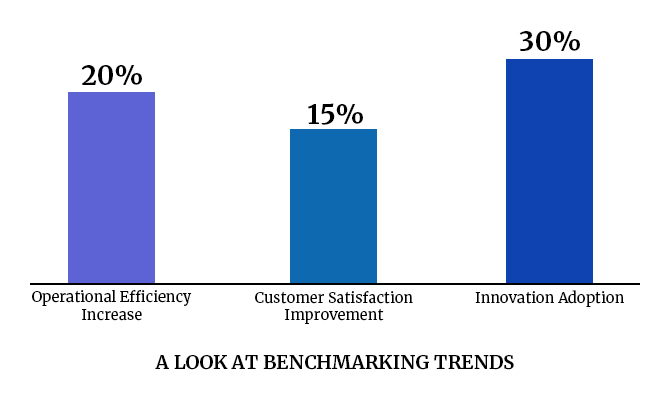Table of Contents
Benchmarking is more than just a buzzword in the business world; it’s a powerful tool that can drive growth and innovation. In this comprehensive guide, we’ll break down what benchmarking is, why it’s crucial for your business, and how you can effectively implement it to achieve remarkable results. Plus, we’ll dive into a real case study to illustrate its impact.
What is Benchmarking?

Benchmarking is the process of comparing your business’s performance against industry standards or leading competitors. The goal is to identify best practices, set performance goals, and uncover areas for improvement. By understanding where you stand in relation to others, you can make informed decisions and drive strategic growth.
Why Benchmarking Matters
- Identifies Performance Gaps: Benchmarking helps you pinpoint where your business is lagging behind and where there’s room for improvement.
- Encourages Best Practices: By learning from industry leaders, you can adopt best practices that have proven successful in similar contexts.
- Drives Innovation: Exposure to new approaches and strategies can spark innovation within your own business.
- Enhances Competitive Advantage: Regular benchmarking ensures you stay ahead of competitors by continually improving your processes and performance.
Key Steps to Effective Benchmarking

- Define Objectives: Determine what you want to achieve through benchmarking. Are you looking to improve operational efficiency, enhance customer satisfaction, or boost financial performance?
- Select Metrics: Choose the metrics that are most relevant to your objectives. These might include financial ratios, customer satisfaction scores, or operational efficiencies.
- Identify Benchmarking Partners: Find businesses or industry standards that excel in the areas you want to improve. This could include direct competitors or organizations in similar industries.
- Collect Data: Gather performance data from your own business and from your benchmarking partners. Use surveys, reports, and industry data sources.
- Analyze and Compare: Evaluate your performance against the benchmarks. Look for gaps and identify areas where you can improve.
- Implement Changes: Develop and execute strategies to close performance gaps and adopt best practices.
- Monitor Progress: Regularly review your performance against benchmarks to ensure continuous improvement.
Real Market Data: A Look at Benchmarking Trends

According to a 2024 study by the Benchmarking Institute, companies that actively engage in benchmarking see a 20% increase in operational efficiency and a 15% improvement in customer satisfaction within the first year. Additionally, businesses that benchmark against industry leaders are 30% more likely to adopt innovative practices that drive growth.
Case Study: Starbucks
Let’s take a look at Starbucks, a global coffeehouse chain that successfully utilized benchmarking to enhance its performance.
Background: Starbucks faced challenges with operational efficiency and customer service as it expanded rapidly. The company decided to benchmark its performance against leading competitors and industry standards to improve its operations and customer experience.
Benchmarking Process
- Objective: Improve operational efficiency and enhance customer service.
- Metrics: Store-level sales, customer satisfaction scores, service speed, and operational costs.
- Benchmarking Partners: Leading coffee chains and fast-food restaurants known for their operational efficiency and customer service.
- Data Collection: Starbucks used internal performance data, customer surveys, and industry reports to gather insights.
- Analysis: They discovered that competitors had adopted more efficient store layouts, streamlined inventory management systems, and innovative customer service practices.
- Implementation: Starbucks invested in new technology for inventory management, redesigned store layouts for improved workflow, and introduced new training programs for staff to enhance customer service.
- Results: Within a year, Starbucks saw a 15% improvement in operational efficiency, a 10% increase in customer satisfaction scores, and a noticeable reduction in service wait times.
Benchmarking allowed Starbucks to identify key areas for improvement, implement effective strategies, and achieve significant operational and customer service enhancements.

Conclusion
Benchmarking is an invaluable tool that can help your business achieve higher performance, drive innovation, and maintain a competitive edge. By understanding where you stand and learning from industry leaders, you can make strategic decisions that lead to significant improvements and growth.
Ready to elevate your business? Dive deeper into the world of benchmarking and discover more insights by tuning into GrowthBuzz. At GrowthBuzz, we’re more than just an e-magazine; we’re a dynamic hub for entrepreneurs, innovators, and thought leaders looking to make a mark in marketing, business, technology, sales, and administration. Visit GrowthBuzz to access the latest episodes, articles, and industry trends.









